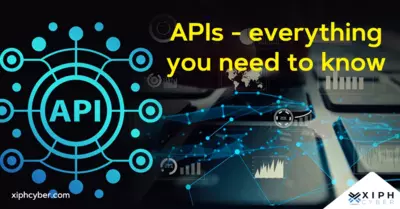Published May 10, 2023 by Xiph
Application programming interfaces (APIs) underpin most of what we see or do online. Every time we check the weather on our phone, make an online payment, or use a ridesharing app, we’re using an API. Businesses also rely on APIs to interact with their customers and partners. But the term ‘API’ can refer to many types of services. So, what type of API do you need, and what protocols and standards should they use?

What is an API?
API, which stands for application programming interface, is a software intermediary that allows two or more applications to talk to each other using a set of rules and protocols. This technology underpins much of the communication between software and services. An API’s defined communication protocol is what allows IT teams to build, connect, and integrate applications quickly and at scale. APIs also allow web developers to access data from other applications and add specific functionalities to applications, without having to write all the code themselves.
How do APIs work?
An API works like a middleman between the application and the web server; the API call is the request. Here’s a simple explanation of how an API works. You (the user) go into the weather app on your phone. This will automatically initiate an API call to fetch updated weather data from the web server – the Bureau of Meteorology (BOM) database and present you with the information you wanted in a readable way. And every time you use an application to communicate with other software or online web servers, you’re using APIs to request the information you need.
It’s important to note that not all APIs are web APIs; some APIs are used only to communicate between two applications on the same computer, and never use the internet. There are APIs for virtually every machine or system that expects to interact with other machines or systems.
Main types of APIs
Not all APIs are created equal. They’re typically classified both according to their scope of use and architecture.
- Open APIs: Also known as public APIs, are open to anyone. There are usually little to no restrictions to access these types of APIs, although most will require some form of authorisation or authentication to track use. Open APIs tend to be more secure and well-developed since they’re intended for public use.
- Partner APIs: These are only accessible by authorised external developers, strategic business partners, or third-party providers. Most businesses or organisations have APIs that their partners can connect to easily to share data, while still enforcing privacy protection. A developer needs specific rights or a licence to access this type of API and it’s not available to the public.
- Internal APIs: Also known as private APIs, these are used internally within a business to share sensitive information or connect systems and data within the business. Internal APIs are also used by different internal teams to improve products and services. They’re the most common type of API. Examples of internal APIs include payment/payroll systems, messenger platforms, coding tools, etc.
- Composite APIs: These combine several API requests into one API call. This helps with data usage and makes applications more efficient. Composite APIs also help companies address more complex system requirements or behaviours.
- Unified APIs: These combine multiple APIs within a category of software products like a customer relationship management (CRM) system or human resources information system (HRIS) into a single API to facilitate data exchanges. Unified APIs simplify the process of linking endpoint/backend resources or data between the multitude of applications that control internal operations.

API architectures and protocols
In addition to API types, there are also API protocols that pertain specifically to the communication ‘formats’ they use.
- REST: The majority of modern web APIs are built on REST, which stands for ‘representational state transfer’. This type of protocol is used for transferring data from servers to clients and has a relatively simple interface between components.
- SOAP: A ‘simple object access protocol’ (SOAP) is a messaging standard that uses XML technologies to exchange information between systems and applications. SOAP APIs have stricter protocols and authentication procedures, making them more secure than REST APIs.
- RPC: The ‘remote procedural call’ (RPC) is the simplest form of API interaction. It facilities communication between different applications on the same device or machine.
- GraphQL API: GraphQL is a query language for APIs with a server-side runtime. It prioritises giving clients access to the exact data they need as quickly as possible.
Benefits of implementing APIs in a business
One of the main benefits of APIs for businesses is their low cost. Using APIs means that developers don’t have to build software functionalities they need to create applications from scratch. APIs also allow businesses to automate more processes and reduce human error, improve user experience and connectivity with other services, as well as build new revenue models.
If your business has a website or mobile application, it’s likely already using multiple APIs to extract and share data from software, web pages, and cloud storage. All businesses should develop an API strategy consisting of both public and private APIs.
A final word
API integration allows businesses to integrate their programs and databases with current industry applications, automate tasks, and provide better user experience and services. However, it’s important to consider factors like scalability, price, and vendor reputation. For more information, contact us via email: enquiries@xiphcyber.com.
Posted in: Security


